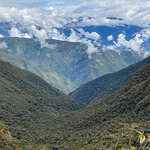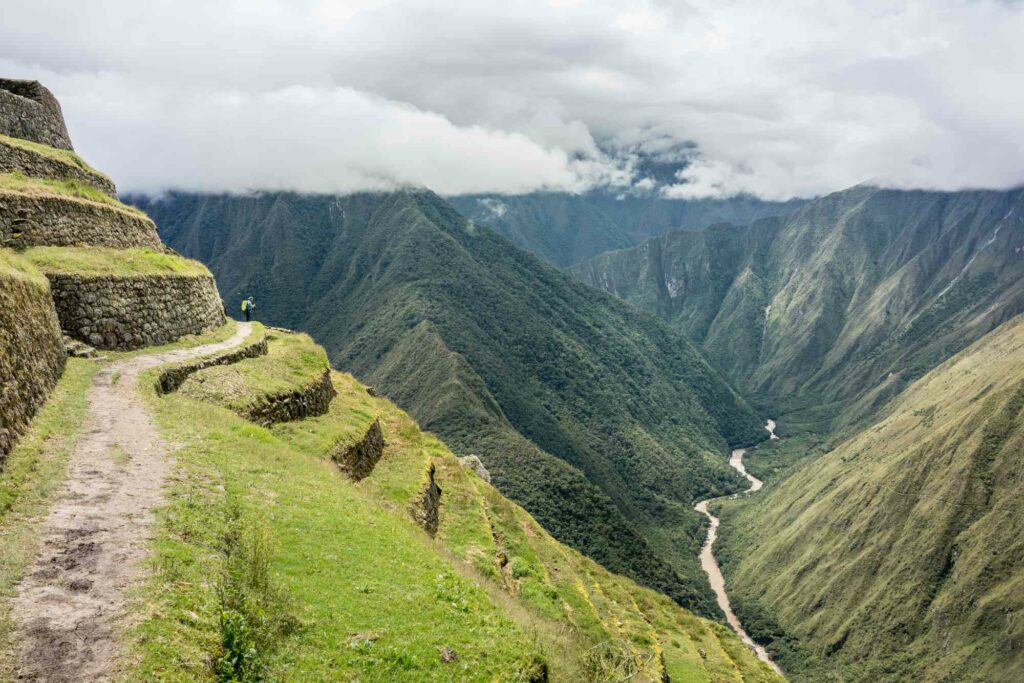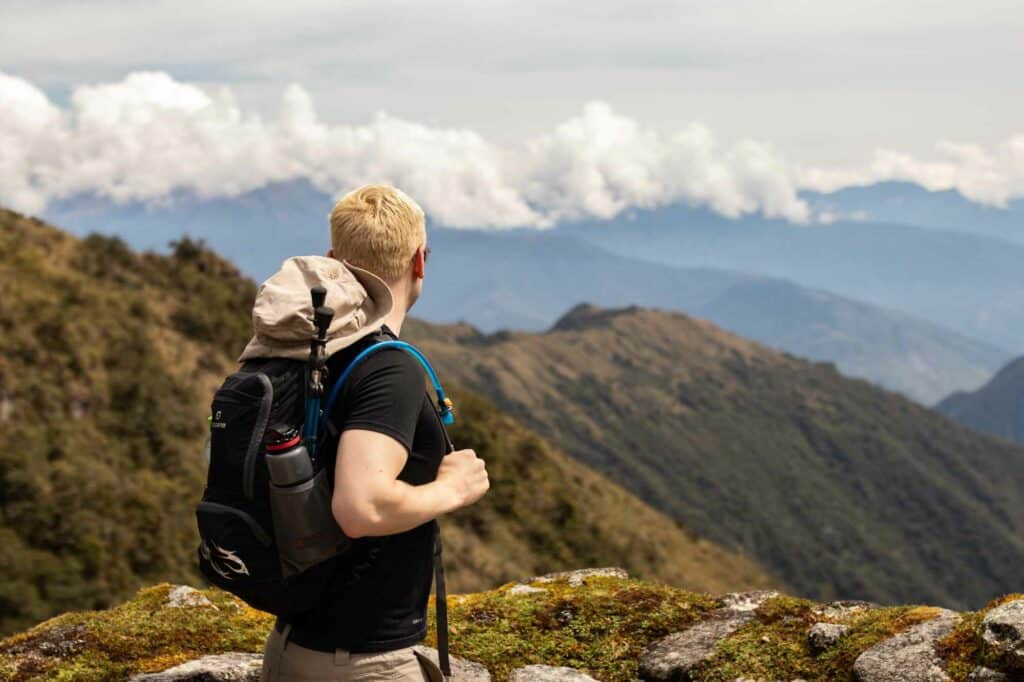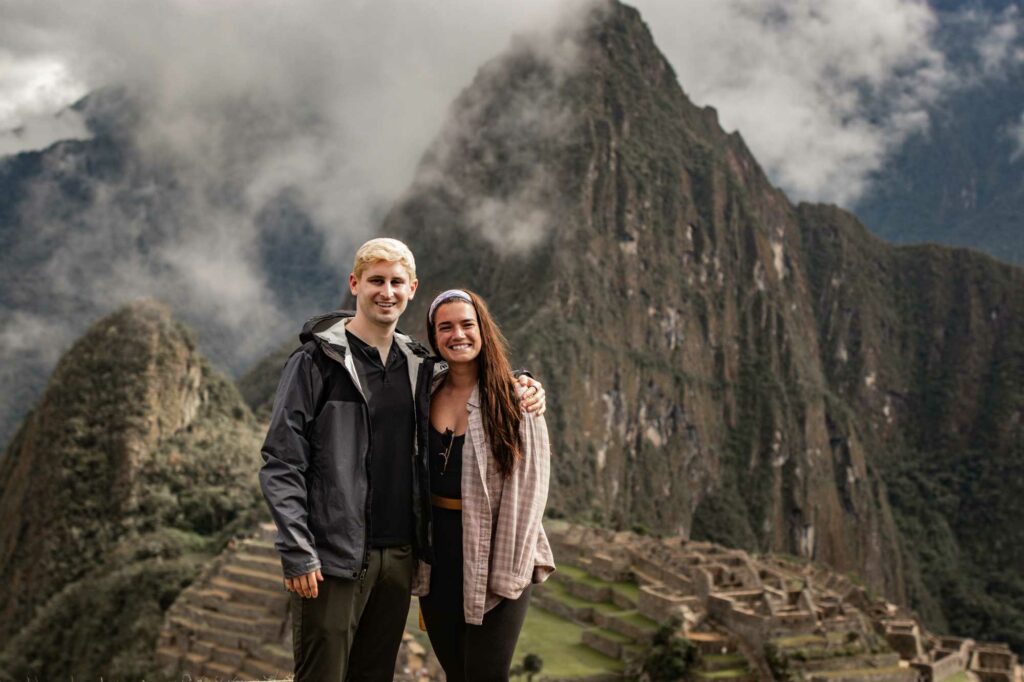ALTITUDEXPERIENCE
FAQ About Inca Trail Tours
Top Questions about the Inca Trail Hiking
The Inca Trail to Machu Picchu hike is a fantastic once-in-a-lifetime experience. Understanding the Inca Trail and getting all of your questions answered about hiking it is critical. Whether you plan to hike the entire Classic Inca Trail in 4 or 5 days, or just a short Inca Trail hike in 2 days, these FAQs will answer all of your Inca Trail questions. Let’s get started!
The Inca Trail, also known as the Inka Trail in Quechua and the Camino Inca in Spanish, is a centuries-old hiking path that leads to Machu Picchu. The Inca Trail is divided into three distinct and overlapping sections: Mollepata, Classic, and One Day. The Classic Inca Trail is the section that tourists hike over the course of four or five days. The One Day section is the final section of the Inca Trail before Machu Picchu, and it is what tourists hike when they do the Two Day or Short Inca Trail Trek. The first day is a one-day hike to Machu Picchu’s Sun Gate, and the second day is a full day of sightseeing.
Yes, it is the ancient Inca path that leads directly from the Sacred Valley to Machu Picchu. It was built specifically for Incas to visit Machu Picchu.
On the Inca Trail, pack animals carrying hikers’ gear are not permitted. Llamas, on the other hand, live in the high mountains and can be seen on the trail and at Machu Picchu.
The Sun Gate, Huaynapicchu, and Machu Picchu Mountain are the three ways to get above Machu Picchu for those amazing pictures you see in books. The Sun Gate is free for everyone to visit and takes about an hour from the bottom of the ruins to the lookout point. This is also where all Inca Trail trekkers enter for the first time to see Machu Picchu. The views are lovely from the gate, but not as high and a bit further than the other two options..
Both Huaynapicchu and Machu Picchu Mountain are permit-required hikes that must be completed within a specific time frame. These permits/tickets will be obtained by AltitudExperience, but they must be obtained several months in advance of your trip. Both provide spectacular views of Machu Picchu from vantage points directly above. Machu Picchu takes about 3 hours to reach the top and is breathtaking on a clear day, but views are frequently obstructed by clouds. Huaynapicchu takes 45 minutes to reach the summit and is by far the most popular of the three options. All of the views are breathtaking.
ARE YOU PLANING A TRIP TO THE INCA TRAIL TO MACHU PICCHU
You can only book an Inca Trail Trek with a tour operator who is authorized to operate Inca Trail tours in Peru. The tour operator will book your trek dates and obtain the Inca Trail Permits required to hike the Inca Trail. You must first fill out a booking form with all of your information and the information of any travelers traveling with you if you have a group. A $200 deposit per person is required. Deposits can be paid separately as long as we have a single booking form to track payments. We will book your permits once we have received all deposits and details. When the permits arrive, we will send you an invoice and confirmation that everything is in order. Once confirmed, all start dates are guaranteed.
We strongly prefer all balances to be paid in CASH, either US or Peruvian currencies are accepted. Here in Cusco everything is done with cash – all salaries are paid in cash for our guides, porters and chefs and all logistics are paid in cash. But we understand that carrying so much cash is a concern when travelling. We are now able to accept most major credit cards at our office. Please keep in mind that credit card companies make it extremely expensive for us to process these cards, so we do charge a 5% transaction fee. You can also pay using PayPal, and we can help you through the process.
Overcrowding, erosion concerns, and overtourism have all necessitated the protection of the Inca Trail in recent decades. Fortunately, these safeguards of limiting daily trekkers and visitors protect the ancient Inca Trail and historic Machu Picchu. They also make it more difficult to secure the desired dates for your trip. Permits from the government can only be obtained by licensed Inca Trail tour operators such as AltitudExperience. Check out Inca Trail Permits – How Permits Work and Why You Need Them In Peru to learn more about the entire permit process.
The tours are essentially the same, but the private tour will only include your family and friends. Group tours include people from all over the world with a wide range of hiking abilities. Private tours also include a complimentary air matt rental.
The majority of visitors will arrive in Cusco by plane. Please keep in mind that the Cusco airport is only for domestic flights. If you arrive in Lima from another country, you must collect your luggage and re-check them for your flight to Cusco. Four airlines offer round-trip service between Lima and Cusco. LATAM Airlines, AVIANCA Airlines, Star Peru, and Peruvian Airlines are among them. They all have comparable schedules and in-flight service, but we usually recommend LATAM or AVIANCA. They are usually the most helpful when there are unexpected flight cancellations or delays.
When you arrive at the Cusco airport, follow the signs to the baggage claim area. To find your Altitude Experience transfer, you must exit baggage claim and enter the airport’s parking lot. If you requested an airport pickup, our team is prepared. For easier identification, they will be holding a sign with your names on it. Look for Alpaca Expeditions’ distinctive bright green uniforms.
While you can stay at any hotel in Cusco, driving around the city is becoming more difficult. Many streets, particularly near the main square, are only accessible by foot. If we are unable to pick you up by car, we will notify you and arrange another meeting point for pick up/drop off. See Where to Stay in Cusco When Hiking the Inca Trail for a list of recommended hotels in Cusco with 3-Star, 4-Star, and 5-Star ratings.
Apart from Cusco, the best place to stay is Ollantaytambo. In comparison to Cusco at 11,152 feet, it is a great option for acclimatizing to elevation at 9,160 feet. You will also get more sleep by staying in Ollantaytambo because we will pick you up about 1.5 hours after the Cusco pick up time. Your briefing can only take place in Cusco. So, please coordinate a time that is convenient for you and our office staff with your AltitudExperience sales representative.
The Huayna Picchu Mountain is that gorgeous, picturesque mountain peak that appears in all of the best photos and postcards, tucked up against the Machu Picchu ruins. When you arrive at Machu Picchu, you can go beyond the basic tour of the ruins and hike up Huayna Picchu Mountain, which is located next to the ruins. This hike will provide you with breathtaking views of the forests and valleys that surround this ancient site, as well as a spectacular aerial view of the Machu Picchu ruins that cannot be seen any other way.
Of course, if you are happy to take the same train out of Aguas Calientes as part of your original itinerary, which departs at 4:22 p.m. that evening, there is no additional charge to move the train back a day. If you require us to book your hotel or another trip to Machu Picchu, there will be an additional charge. If you decide to stay an extra night in Aguas Calientes (the town at the entrance to Machu Picchu), please notify the Alpaca Expeditions office at least one month in advance so that your train ticket is purchased for the correct day.
Yes, nearly 80% of our guests want to include the Huayna Picchu hike because the views and vantage point looking down on Machu Picchu are simply unparalleled. The other 80% are typically unable to do so due to health, age, or personal preferences. Some will instead hike nearby Machu Picchu Mountain, a longer but less steep hike up another mountain with a view of Machu Picchu. More information on Huayna Picchu Mountain can be found.
The Huayna Picchu hike involves ascending a long, steep set of stone steps carved into the mountainside. The height of Huayna Picchu is 2700 meters/8858 feet. As you climb the steps, you can hold onto a cable. The hike up Huayna Picchu is a truly difficult climb that will take you 2 hours to complete. Permits are required, and the times for climbing are specified on your ticket. You should purchase a ticket to climb Huayna Picchu when you book your trip to Machu Picchu, or as soon as you know you want to. It’s a popular climb, and tickets sell out quickly.
Yes! Hiking the Inca Trail without an operator is now illegal and has been since 2000. Hiking requires a permit, which only licensed operators can obtain – so you must be specific. Other Andes trails can be done without a guide, but the Inca Trail can only be done with a licensed guide from a licensed tour operator.
THE INCA TRAIL'S WEATHER, SEASONS, AND RAINFALL
The weather on the Inca Trail varies according to the season. Historically, the dry season lasts from April to September, the rainy season lasts from November to February, and the bridge months of March and October are a mix of both. Because Peru is in the southern hemisphere, it is winter when it is summer in North America. The months of June to August are considered peak winter in Peru, and November to February are considered summer, or the rainy season due to the climate in the Machu Picchu region. However, the weather has become more volatile in recent years. No matter when you visit, it is best to dress for the sun and rain. Temperatures are fairly consistent throughout the year. It is always cold in the mornings and evenings. Bring a fleece jacket in the mornings and a down jacket in the evenings. Once the sun comes up, you should be able to hike and tour Machu Picchu in short sleeves. Long pants (yoga or hiking) are recommended to help keep mosquitos at bay in Aguas Calientes.
We strongly prefer all balances to be paid in CASH, either US or Peruvian currencies are accepted. Here in Cusco everything is done with cash – all salaries are paid in cash for our guides, porters and chefs and all logistics are paid in cash. But we understand that carrying so much cash is a concern when travelling. We are now able to accept most major credit cards at our office. Please keep in mind that credit card companies make it extremely expensive for us to process these cards, so we do charge a 5% transaction fee. You can also pay using PayPal, and we can help you through the process.
PHYSICAL READYING FOR AN INCA TRAIL TREK
The Inca Trail is a 27-mile journey through mountainous regions and over difficult terrain. The trek takes place at a high elevation of up to 4200 meters above sea level. As a result, this is a physically demanding exercise that requires you to be physically fit. In the months leading up to the trek, it is recommended that you go to the gym or walk for a couple of kilometers every day. It is also critical that you acclimate to the altitude. You can accomplish this by spending a few days in Cusco, which is 3400 meters above sea level.
Every tour operator is a little different, but the hike is usually divided into the following sections:
- Day 1: 11 km (6.8 miles)
- Day 2: 12 km (7.5 miles) (7.5 miles) This day also includes a hike over Dead Woman’s Pass. At 4215 meters / 13,829 feet, this is the highest point on the Inca Trail. Please keep in mind that this is nearly 1800 meters/5905 feet higher than Machu Picchu! That is more than a mile higher than Machu Picchu!
- Day 3: 16 km (10 miles)
- Day 4: 4 km (2.5 miles) This day is dedicated to visiting Machu Picchu, the Last City of the Incas. Early in the morning, it’s a short hike through the famous Sun Gate into Machu Picchu! Then you’ll spend several hours with your guide exploring Machu Picchu.
The total elevation gained and lost on the Inca Trail in Peru is nearly 6000 feet (1800 meters). The Classic Inca Trail stretches for about 28 miles or 45 kilometers and ranges in altitude from 7872 feet/2400 meters at Machu Picchu to over 13,700 feet/4200 meters at Dead Woman’s Pass.
There is no government regulation regarding the age limit for the Inca Trail, and AltitudExperience does not have an age requirement, particularly for children. We’ve seen five-year-olds and even two-year-olds hike with their families, with the parents and porters taking turns carrying them!
Yes, it’s the same route as the shorter trek, just slower and with more time spent at the ruins each day. While you will still arrive at Machu Picchu on Day 4, you will be there for sunset rather than sunrise (hopefully due to good weather), and then you will head down to Aguas Calientes for some much-needed rest and a hot shower. The following morning, you will be at Machu Picchu for the sunrise (again weather dependent). The best option for families with younger children.
We strongly prefer all balances to be paid in CASH, either US or Peruvian currencies are accepted. Here in Cusco everything is done with cash – all salaries are paid in cash for our guides, porters and chefs and all logistics are paid in cash. But we understand that carrying so much cash is a concern when travelling. We are now able to accept most major credit cards at our office. Please keep in mind that credit card companies make it extremely expensive for us to process these cards, so we do charge a 5% transaction fee. You can also pay using PayPal, and we can help you through the process.
PACKING FOR YOUR INCA TRAIL TRIP
All of your luggage is unnecessary for the trek and should be left in Cusco. All hotels are very accommodating and are used to storing luggage on-site; alternatively, you can safely store your luggage with the AltitudExperience team.
Porters will transport all of your overnight supplies in your duffel to each campsite, but everyone must have a day pack with everything they need/want for hiking during the day, as your duffel will only be available in the morning and evening.
The following are typical items to keep in your daypack: A raincoat, sweater, and/or jacket, a water bottle, a flashlight, insect repellents, sunblock, antiseptic hand gel, a water bottle or hydration pack, any necessary toiletries or medications, and a backup stash of toilet paper are all recommended. You should also bring snacks, cookies, and dried fruit. AltitudExperience will supply you with snacks. Don’t forget to bring your camera!
The Inca Trail 2 Day treks are very different from the 4-7 day trips. The two-day trip includes one day of hiking and one day at Machu Picchu. You will also be carrying all of your personal belongings on this trip. Please pack as lightly as possible, bringing only the necessities.
ere is a list of examples. To see the recommended amounts and types of items, read our comprehensive ultimate packing list guide for hiking the Inca Trail. Check out what equipment and gear is available for rent for hiking the Inca Trail so you can pack less and bring less to Peru.
- Sporty, sweat-wicking underwear
- The foundation layers
- T-Shirts for Hiking (LS and SS)
- Shorts or pants for hiking
- Windbreaker and fleece jacket
- Warm coat (for nights)
- Poncho or raincoat
- Hat
- Sunglasses
- Headlamp
- Gloves
- Walking canes (available for rent)
- Hiking boots or sandals
- Socks for hiking
- Gaiters (optional)
- Pack for the day
- Bottle of water
- Pack of hydration
- Bag for sleeping (available for rent)
- Liner for a sleeping bag (available for rent)
- Mattress made of air (available for rent)
- Pillow that inflates (optional)
- Plugs for your ears (optional)
- Passport \sInsurance
- Trekking Towel (optional)
- Swimsuit (optional – for hot springs on some treks)
- Sunscreen that is waterproof
- Bug repellent
- Wipes for babies
- Bags made of plastic
- Blister treatment
- Medications in genera
- Snacks
- Toiletries
- Cash
- Camera
- Power bank/battery charger for any electronic device, such as smartphones or cameras.
If possible, we always recommend light hiking boots. A pair with ankle support is especially useful for inexperienced hikers. Because you’ll be climbing down so many steps built by the Incas, which are now uneven and at varying heights, the extra support keeps your ankles from twisting. Make sure to break in any new boots well in advance of your trip!
Walking sticks are always useful for trekkers, but they are especially useful on this trek. You will walk up and down many stone stairs on the Inca Trail footpath. The Incas hand carved and laid them all 400 years ago. They are not all straight and vary in height. Walking sticks can help relieve pressure on your knees while hiking this section of the trail. They will also assist you in ascending the mountain.
When not in use, all of our walking sticks are expandable black diamond poles that can be collapsed smaller and tied to your bag.
Metal hiking pole tips are not permitted on the Inca Trail. If you bring your own walking poles, make sure they have rubber tips or the rangers will not let you use them. Rubber tips can be purchased in Cusco if you forget to replace your metal tips before arriving. Also, keep in mind that airlines will not allow you to fly with walking sticks in your carry-on luggage; you must check them in. Check to see if you can bring them at all.
Altitude rents out walking poles/sticks, so you don’t have to worry about bringing them on flights if you don’t want to.
Our Inca Trail “sleep System” includes a sleeping bag, a sleeping bag liner, and various sleeping pad options. We use mummy-style sleeping bags that are suitable for temperatures as low as -15° C / 5° F. Please keep in mind that if you are taller than 1.95 meters / 6’4′′, you will be unable to rent a sleeping bag in Cusco. It is recommended that you bring your own in this case. Everyone is given cotton liners that are machine washed after each use. These must be factored into your duffel weight.
Some visitors will rent our sleeping bags and bring their own lightweight sleeping bag liner with them.
A foam mat is included to keep you separate and warm from the ground. You may want to consider upgrading for added comfort by renting an inflatable sleeping pad, which adds three inches of comfort on top of the provided foam mat. (You will employ both.) We use inflatable air mattresses from Thermarest and Eureka.
The last campsite on the Inca Trail has an electrical outlet. However, because there is only one plugin source, there may be a very crowded line to use it, so we recommend bringing extra battery packs or power bans with you. Consider the following portable battery packs / power banks.
Most Peruvian hotels and even homes now have both the standard US outlet and the South American outlet.
PORTERS ON THE INCA TRAIL TREK
Porters carry group and customer overnight gear on the Inca Trail because pack animals such as horses, mules, or llamas are not permitted. The Peruvian government regulates the Inca Trail, which implemented a permit system in 2000 to protect the Inca Trail from damaging erosion.
Porters are provided on all treks to transport all hiking equipment such as tents, food, dining equipment, and so on. You can hire a second personal porter for $100 if you feel the need. However, all of our treks include a personal porter who will carry up to 7kg of their personal items for free, so if you stick to our packing list and pack light, you shouldn’t need an extra one.
In general, if the group was pleased with the service, it is customary to tip your team. If you’re unsure how much to tip the porters and chef, ask your guide, who will give you an honest answer. And, if you brought any equipment for the trek that you don’t think you’ll use again, you can give it to our porters. There are no harder workers anywhere!
On the trail, we prioritize the safety and comfort of both guests and the AltitudExperience team. We take great pride in the precautions we take on treks through the Andes. We were the first company to require satellite phones on the trail, our team goes through annual safety and first aid training, and we are always aware of weather and trail conditions. On AltitudExperience treks, the guides carry first aid kits, oximeters, an oxygen tank, and satellite phones. If a guest requires an evacuation, the staff will assist in getting the person to a location where medical transport can take place. Guests are responsible for any evacuation costs.
At each meal, we provide clean water. You must bring water for the first morning of hiking only, as we will not have time to filter water until your first lunch. Each day at each meal, water is filtered, boiled, and cooled for hikers to refill their water bottles and hydration packs for each hiking segment.
At AltitudExperience, you will only eat delicious meals prepared by professionally trained chefs! All you have to do is have fun.
With each trek, we provide private, eco-friendly toilet tents. Because the bathrooms provided on the trail are heavily used by the trekking public, this makes your life much more comfortable and ensures your privacy. They are typically poorly maintained and in poor condition.

Top Inca Trail Tours
What Our Clients Say in Tripadvisor











